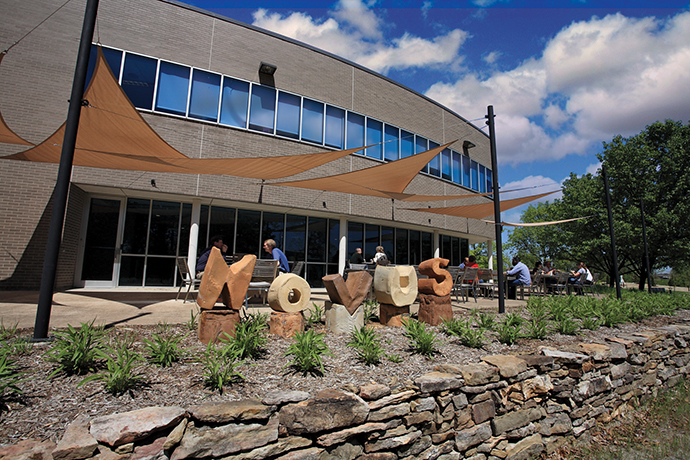The array of site certification available to regions today includes a number of groundbreaking programs. They can be led by utilities and railroads such as TVA, AEP, CSX, BNSF, Southern Company and Entergy. They are championed by states and provinces including Iowa, South Carolina, Ohio, Indiana, Tennessee, Missouri, Oregon, Wisconsin and Ontario. And they’re vouchsafed by consultancies such as Austin Consulting and Olsson Associates whose expertise lends such programs credence when it comes to geotechnical, infrastructure and other checklist items.
Meanwhile, there’s a well-known and entirely different certification program that continues to build a global portfolio: the U.S. Green Building Council’s LEED green building rating system. LEED buildings now number in the tens of thousands worldwide, with a number of various categories, and now the USGBC’s program portfolio also includes programs addressing sites and communities. In some cases, it may behoove corporate end user, development and government leaders to have such certified green projects in close proximity to sites otherwise certified for immediate development.
Administered by Green Business Certification Inc. (GBCI), the Sustainable SITES Initiative (SITES®), a complement to LEED, is a comprehensive program for designing, developing and maintaining sustainable landscapes. The program was developed through collaboration by the American Society of Landscape Architects (ASLA), the Lady Bird Johnson Wildflower Center at The University of Texas at Austin and the U.S. Botanic Garden. GBCI acquired SITES in 2015.
“Using the SITES rating system,” the USGBC explains, “projects are planned, designed and developed in a way that protects and enhances the benefits people derive from healthy, functioning landscapes through practices, such as carbon storage, crop pollination and flood mitigation.”
SITES can be applied to just about any project, anywhere in the world, on sites with or without buildings — from corporate campuses to streetscapes to public parks. As of March 2018, nearly 120 projects and nearly 98 million gross sq. ft. of space across 35 states and eight countries had registered or certified with SITES. The latest website update features 56 certified projects, including animal health and nutrition company Novus International’s headquarters in St. Charles, Missouri, outside St. Louis; the Tuthill corporate campus in Burr Ridge, Illinois (designed two years before LEED even existed); HELIX Environmental Planning’s HQ in La Mesa, California; the “HP Inc.” campus in Boise, Idaho (now occupied by state employees since the state’s purchase of the property in 2016); and Green Wise’s HQ in the Tama District of Tokyo (the first project outside of the United States to achieve SITES certification).
Another layer of certification joined the USGBC’s universe in November, when the organization announced that the STAR Community Rating System, which offers certification for sustainable communities, will be fully integrated into USGBC’s LEED for Cities and LEED for Communities programs. The 75 cities and communities that have achieved STAR certification (Columbia, South Carolina, most recently) and the 20 additional cities and communities that are seeking STAR certification will now be part of the LEED network.
“Integrating the STAR Community Rating System into LEED for Cities and LEED for Communities, will bring us closer to our goal of advancing sustainable cities and communities around the world,” said Mahesh Ramanujam, president & CEO, USGBC. “We are helping cities develop responsible, sustainable and specific plans for energy, water, waste, transportation and many other factors that contribute to raising the standard of living for all people around the world.”
LEED Marches On
The USGBC in February announced its top 10 non-U.S. countries for LEED-certified space. Mainland China led the way with 1,494 projects encompassing more than 68 million gross square meters of space (732 million sq. ft.). No. 2 Canada had the most projects, at 3,254, accounting for 46.8 million sq. m. (503.7 million sq. ft.). They were followed by India, Brazil, South Korea and Turkey, in that order. LEED now has 96,275 registered and certified projects in more than 167 countries and territories.
The organization also announced its top 10 LEED states, based on LEED-certified square feet per person. Illinois was No. 1, followed by Massachusetts, New York, Washington and Texas. “Despite Washington, D.C. not appearing in the official Top 10 list because of its status as a federal territory, it has consistently led the nation and in 2018 certified 61.74 square feet of space per resident across 145 green building projects,” the USGBC stated. “The nation’s capital has a strong legacy of sustainability leadership and in 2017 was the first city in the world to be LEED-certified.”
Nine of the top 10 states are also home to LEED-certified cities and communities, including Chicago, Seattle, Austin, San Diego County and more. There are currently more than 137 registered and certified LEED cities and communities around the world, representing more than 50 million people.

